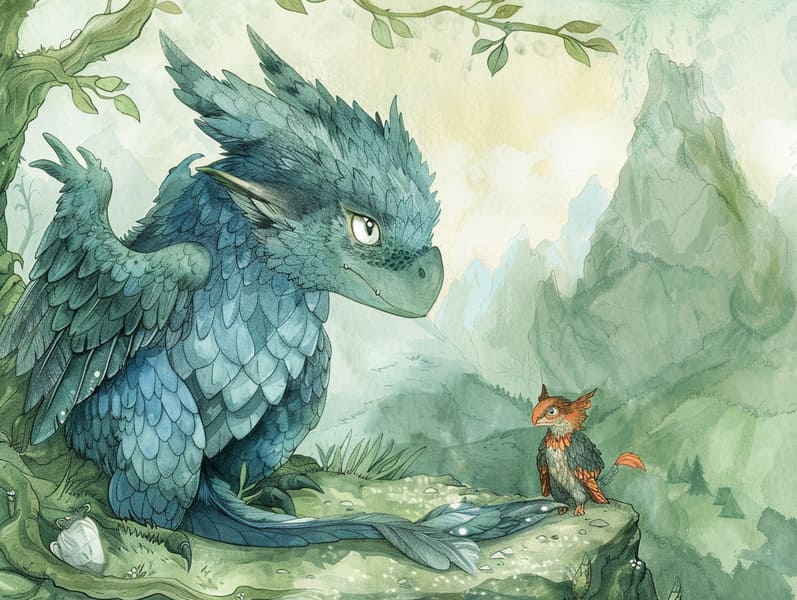
Traditional fairy tales have ancient roots. These tales have been whispered from one generation to the next well before they were ever transcribed. They originated from a variety of traditions, including Eastern traditions. They were initially transmitted among elders, often carrying themes and messages reflective of the societal norms and beliefs of the time.
The renowned Brothers Grimm, Jacob and Wilhelm (the Grimm brothers), were among the first to gather many of these beloved tales. Their published works, "Grimm's Folk Tales," included stories like "Ashenputtel," "Little Brother and Little Sister," and "Little Snow White," which have since become cornerstones in the world of traditional fairy tales. Similarly, Hans Christian Andersen's charming tales, such as "The Mermaid," and "The Story of the Ugly Duckling," have won hearts worldwide, solidifying their place in the pantheon of timeless fairy tales.
Though they are old, classic fairy tales remain as significant as ever, especially as nighttime stories for kids. These delightful tales are now available in multiple formats, including vividly illustrated books, whimsical animations, and online fairy tales.
Their lasting appeal can be credited to several magical reasons:
Significant Morals: Classic fairy tales often offer important moral lessons. Stories like "The Wolf and the Liar" teach the virtue of honesty, while "The Story of the Tortoise and the Hare" point out the qualities of tenacity and modesty. These narratives offer kids clear distinctions between truth and falsehood, developing their moral compass in a mild yet profound way.
Empathy and Understanding: Traditional fairy tales frequently depict heroes facing struggles and tests, encouraging young listeners to understand with their struggles and celebrate their triumphs. For instance, "The Story of Beauty and the Beast" reveals the value of looking beyond appearances to perceive the true essence of a person, strengthening awareness and understanding.
Cultural Awareness: Many old fairy tales are steeped in the cultural contexts from which they came. Engaging with these tales can provide captivating looks into different cultures, strengthening a sense of world appreciation and comprehension.
Inventiveness and Fantasy: The supernatural elements in old fairy tales—mythical creatures—trigger children’s innovative ideas. These stories take readers to supernatural realms, engendering fantasy ideas and a sense of magic that continues a lifetime.
Ancient fairy tales are not only mesmerizing but also teaching. They provide whimsical tools in promoting various intellectual and emotional capacities in the young. When timeless fairy tales are check it out spoken, they promote language proficiency by teaching new language items and complex sentence structures. This practice also enhances hearing perception and attention, as little ones pay close attention, keen to see what happens next.
Furthermore, discussing the themes and characters of traditional fairy tales can strengthen logical thinking and problem-solving abilities. Young readers are led to spot patterns, guess what will happen, and know cause and effect. These analyses also support young readers communicate their thoughts and feelings, advancing their emotional intelligence.
In today’s information age, the proliferation of internet fairy tales has made these stories more accessible than ever. Websites and programs give extensive collections of old fairy tales that can be explored or heard anytime, anywhere. Fairy tales read aloud are particularly liked, featuring an delightful method for the young to appreciate these delightful tales. Audiobooks and read-to-me videos take characters and settings to life, often augmented by enchanting sound effects and melodies that boost the narrative experience.
The unending appeal of classic fairy tales lies in their ability to evolve to modern times while preserving their key morals. Contemporary reimaginings of these narratives often show more multicultural figures and modern settings, making them meaningful to today’s audience. However, the core values of valour, benevolence, and righteousness remain unchanged, continuing to strike a chord with listeners of all ages.
Ancient fairy tales also offer a sense of reassurance and knownness. They render accessible a orderly narrative with a definite beginning, middle, and end, often coming to a close with the conclusion of conflicts and the triumph of righteousness over wickedness. This certainty can be heartening for kids, extending a sense of stability in an unpredictable world.
Old fairy tales continue to entrance and guide new generations, maintaining their beauty and pertinence in modern society. As kids' bedtime tales, they furnish a perfect blend of fascination and comprehension, encouraging moral values, empathy, and creativity. The availability of online storybooks and the popularity of fairy tales read out loud confirm that these ancient narratives remain reachable to new generations.
By protecting and releasing these fairy tales, we continue to commemorate the rich tapestry of folklore and cultural heritage. Whether you are reading a artistically illustrated book, exploring a digital collection, or listening through an read-aloud book, the spell of traditional fairy tales is always within reach. These narratives demonstrate of the timeless influence of storytelling and its ability to bond us across epochs and places.
Be it you are exploring a artistically illustrated book, browsing a internet collection, or listening via an voice book, the wonder of bedtime fairy tales is always within reach.
These narratives illustrate of the consistent essence of tales and its ability to bond us across epochs and places, casting a charm that charms and informs alike.